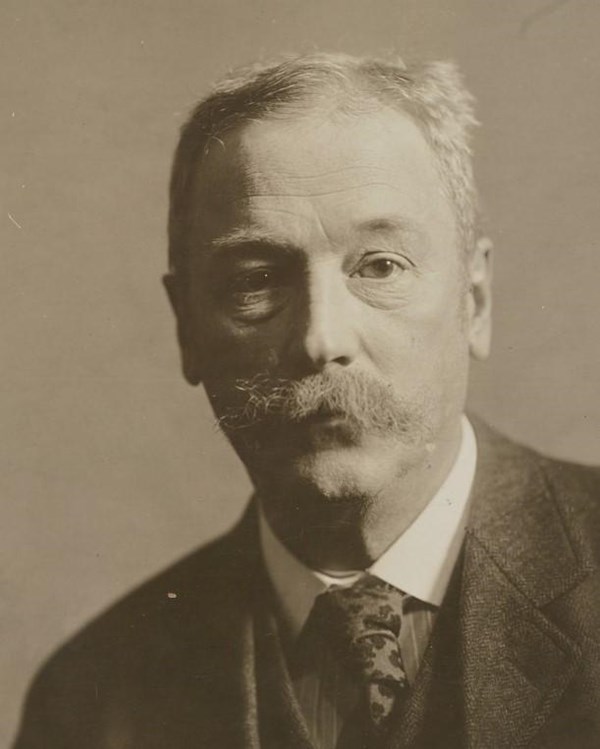Last updated: August 17, 2024
Person
Thomas Wilmer Dewing

Thomas Wilmer Dewing and Dewing family papers, American Art Archive, Box 1, Folder 18.
“His art is all grace and frail, tender beauty, flowering in a style that is unique,” wrote one critic about Thomas Wilmer Dewing’s paintings.1
Best known for his portrait and landscape paintings, Dewing began his art studies at the Lowell Institute in Massachusetts. He continued his training in 1876 at the Academie Julian in Paris before returning to the United States to teach at the Museum of Fine Art in 1878.2
In 1880, Dewing moved to New York City where he met fellow accomplished portrait painter Maria Oakley. The couple were married the following year and quickly moved among various artistic social circles. By 1886, they followed friend and sculptor Augustus Saint-Gaudens to Cornish, New Hampshire where many artists gathered for summers of creativity, respite, and community. Their presence made them some of the first members of the Cornish Colony. Many of his works include the natural features of the Cornish area where the couple summered through 1905.
Thomas Dewing played a role in transforming the American art world as a member of the Ten American Painters, often shortened to “The Ten.” This group of painters founded by Julian Alden Weir, John Henry Twachtman, and Childe Hassam upset the status quo of conventional artists and provided opportunities for new artistic styles to flourish, including American Impressionism. Not an impressionist himself, Dewing often worked in a tonalist style. “Mr. Dewing’s variations are like those of a musician, ranging up and down a scale which is nominally restricted yet seems illimitable, for he does with form and color what his colleague of the piano, say, does with tone – he subtly touches the imagination,” continued the critic.
Dewing mostly stopped painting after 1920 due to declining health as he grew older and lived another 18 years. Recent efforts have been made to preserve his legacy and commemorate his art, starting with an exhibition of his work in 1996 at the Brooklyn Museum of Art.3
1Unidentified clipping within Thomas Wilmer Dewing and Dewing family papers, Box 1, Folder 14, Archives of American Art.
2Thomas Wilmer Dewing. Smithsonian American Art Museum. Accessed August 13, 2024.
3The Art of Thomas Wilmer Dewing: Beauty Recogfigured. Brooklyn Museum. March 22, 1996 through Jan 19, 1997.
